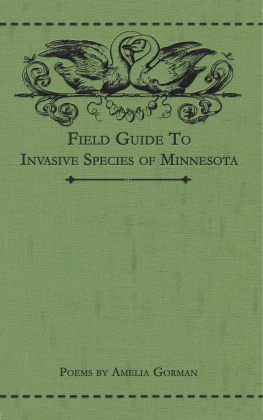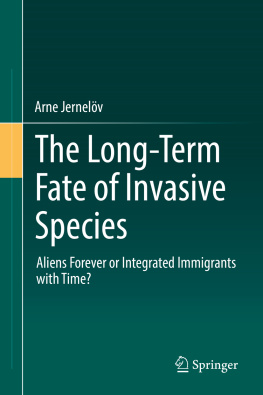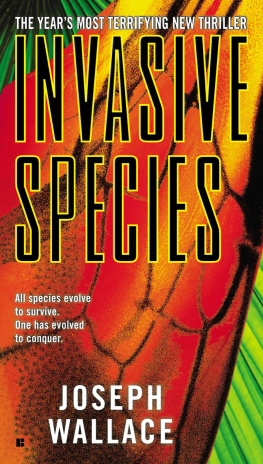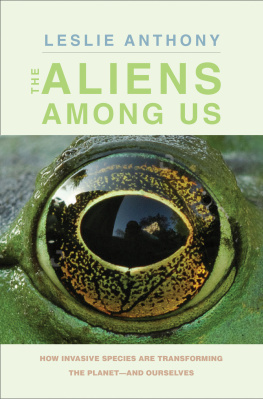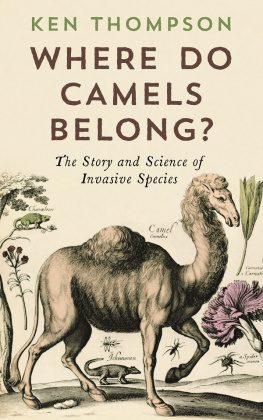Keller Reuben P. - Bioeconomics of Invasive Species
Here you can read online Keller Reuben P. - Bioeconomics of Invasive Species full text of the book (entire story) in english for free. Download pdf and epub, get meaning, cover and reviews about this ebook. year: 2009, publisher: Oxford University Press, genre: Politics. Description of the work, (preface) as well as reviews are available. Best literature library LitArk.com created for fans of good reading and offers a wide selection of genres:
Romance novel
Science fiction
Adventure
Detective
Science
History
Home and family
Prose
Art
Politics
Computer
Non-fiction
Religion
Business
Children
Humor
Choose a favorite category and find really read worthwhile books. Enjoy immersion in the world of imagination, feel the emotions of the characters or learn something new for yourself, make an fascinating discovery.

- Book:Bioeconomics of Invasive Species
- Author:
- Publisher:Oxford University Press
- Genre:
- Year:2009
- Rating:4 / 5
- Favourites:Add to favourites
- Your mark:
- 80
- 1
- 2
- 3
- 4
- 5
Bioeconomics of Invasive Species: summary, description and annotation
We offer to read an annotation, description, summary or preface (depends on what the author of the book "Bioeconomics of Invasive Species" wrote himself). If you haven't found the necessary information about the book — write in the comments, we will try to find it.
Bioeconomics of Invasive Species — read online for free the complete book (whole text) full work
Below is the text of the book, divided by pages. System saving the place of the last page read, allows you to conveniently read the book "Bioeconomics of Invasive Species" online for free, without having to search again every time where you left off. Put a bookmark, and you can go to the page where you finished reading at any time.
Font size:
Interval:
Bookmark:
Bioeconomics of Invasive Species
Integrating Ecology, Economics,
Policy, and Management
Edited by
Reuben P. Keller
David M. Lodge
Mark A. Lewis
Jason F. Shogren


Oxford University Press, Inc., publishes works that further
Oxford Universitys objective of excellence
in research, scholarship, and education.
Oxford New York
Auckland Cape Town Dar es Salaam Hong Kong Karachi
Kuala Lumpur Madrid Melbourne Mexico City Nairobi
New Delhi Shanghai Taipei Toronto
With offices in
Argentina Austria Brazil Chile Czech Republic France Greece
Guatemala Hungary Italy Japan Poland Portugal Singapore
South Korea Switzerland Thailand Turkey Ukraine Vietnam
Copyright 2009 by Oxford University Press, Inc.
Published by Oxford University Press, Inc.
198 Madison Avenue, New York, New York 10016
http://www.oup.com
Oxford is a registered trademark of Oxford University Press
All rights reserved. No part of this publication may be reproduced,
stored in a retrieval system, or transmitted, in any form or by any means,
electronic, mechanical, photocopying, recording, or otherwise,
without the prior permission of Oxford University Press.
Library of Congress Cataloging-in-Publication Data
Bioeconomics of invasive species : integrating ecology, economics, policy,
and management/edited by Reuben P. Keller... [et al.].
p. cm.
Includes bibliographical references and index.
ISBN 978-0-19-536798-0; 978-0-19-536797-3 (pbk.)
1. Biological invasions. I. Keller, Reuben P.
QH353.B53 2009
577.18dc22 2008030333
9 8 7 6 5 4 3 2 1
Printed in the United States of America
on acid-free paper
This is a book that all ecologists and economists interested in bioeconomics should read. The master narrative encompassing a bi-disciplinary framework and endogenous risk makes it intuitively and logically appealing. A narrative that can be generalized in such a straightforward manner constitutes a forceful principle for organizing research and for informing policy. The work here should leave even the disciplinary isolationist interested in studying more about what a joint determination framework can offer.
Invasive species are a major environmental policy challenge. They continue to alter, often in undesirable ways, the workings of ecosystems around the globe. This book provides general and species-specific overviews of ecological and economic tools and also consensus propositions for studying interactions of the determinants and behaviors of invasive species. It treats lessons from past attempts to understand and to manage invasive species. It also suggests strategies for understanding and combating the threats to environmental and economic well-being that nonindigenous species pose. Readers will get a thorough treatment of the relevant scientific issues as well as a comprehensive review of the analytical and the empirical tools used by ecologists and economists to research invasive aquatic and terrestrial flora and fauna in North America and around the world.
Pleas for collaboration between ecologists and economists to advance understanding and resolution of environmental problems are so commonplace as to be almost hackneyed. When adherents of each disciplinary personality try to work together, they usually lapse into discord, followed by retreat into remote if not totally separated intellectual pursuits. Most ecologists and economists see only dimly how to clarify assumptions about their respective disciplines. The book provides a master narrative in which ecological and economic expertise complement and make each area more robust than were it to stand alone.
Ecological and economic systems each mediate the behaviors of the opposite system. The appropriate focus is the decision maker working in her or his environment, for in reality, neat separation of natural and human activities does not exist. A species initial invasion, establishment, spatial spread, and temporal persistence influences and is influenced by abiotic and biotic processes and by individual and institutionalized human decisions. Decision makers adapt to environmental change by changing their personal behaviors as well as by directly changing a particular environment. Interactions and feedback between and among systems and system scales influence the structure, resilience, and dynamics of respective systems. Thus, jointly determined vision encourages individuals from each discipline to consider and understand what the other brings to the table. Each discipline is thereby forced to better scrutinize and document the information needs of the other. Such a vision supplies a framework for fostering sharper questions as well as sharper and smarter answers. This volume makes better-informed outcomes possible.
The focus of this book is on the bioeconomic behavioral roots of invasive species. Evaluation techniques (e.g., energy analysis, benefitcost analysis) take a secondary role. The authors primarily address what does happen rather than what should happen. They present empirical illustrations demonstrating that the joint determination vision produces different answers from those arising from a framework based solely on either the ecological or the economic system.
Framing the causal relations between the ecology and the economics of invasive species as reciprocating systems does not imply that researchers should reform their entire set of ecological and economic tools or the tenets these tools have uncovered. Similar tools will likely be employed to develop propositions and to extract empirical results, whatever framework is used.
It is possible for model components to become so entangled in a web of interconnectedness, especially when some components are ill defined, that explanatory power is lost rather than gained. Parsimony can trump completeness, implying that there has to be some limit to the reciprocal coupling of the ecological and the economic components of an environmental model. Some intellectual separation is necessary to mark distinctions in system integration and to assure empirical content. This book acknowledges the parsimonycompleteness tradeoff. Given limited research budgets and policy goals, this tradeoff immediately brings up the question of those facets of an invasive species model for which accuracy (unbiasedness) and precision (low variability across independent measurements) are especially important. Though the authors offer no firm answers to this question, the background they provide on invasive species will help formulate answers. A key extension of joint determination runs throughout the book. Uncertainty, irreversibilities, and timing issues almost always characterize invasive species problems. Uncertainty about causes or consequences shifts the focus to endogenous risk, a scenario in which decision makers can try to alter the risks (the product of probability and severity, if realized) of the establishment, spread, and persistence of an invasive species. An endogenous-risk focus has the potential to make less costly the tradeoff between model parsimony and completeness. A careful reading of this book strongly conveys this impression.
Whatever the issue, complexity and ambiguity tempt policy makers and even scientific experts to wrap themselves in a cloak of objectivity by picking and choosing the scientific results they deem relevant. The authors are alert to this temptation. Policy makers and experts must often transfer findings from existing original studies to new areas of scientific or policy interest. Several chapters here consider the transfer question. They ponder both the theoretical underpinnings of the question and its statistical and computational treatment. In particular, the authors recognize that combining information from multiple sources and models of a common phenomenon can produce parameter estimates corresponding more closely to a new setting than can any single source.
Next pageFont size:
Interval:
Bookmark:
Similar books «Bioeconomics of Invasive Species»
Look at similar books to Bioeconomics of Invasive Species. We have selected literature similar in name and meaning in the hope of providing readers with more options to find new, interesting, not yet read works.
Discussion, reviews of the book Bioeconomics of Invasive Species and just readers' own opinions. Leave your comments, write what you think about the work, its meaning or the main characters. Specify what exactly you liked and what you didn't like, and why you think so.

